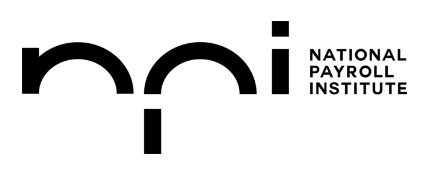Organizations are facing the biggest talent crisis since the 2008 recession. However, this time around, people are no longer competing for jobs. Companies are competing for people.
According to a 2022 report from McKinsey & Company, 40 per cent of employees in the global workforce are considering resigning from their roles and 36 per cent have already left their roles without having their next job in place.
So, what is going on? At the beginning of the pandemic, employees put their job search on pause in favour of job security. Now, people are redefining the meaning of work in their lives and new “work” narratives have emerged:
 Happiness and purpose first:
Happiness and purpose first:
Many are looking to make a career transition to find work that makes them happy, offers purpose and gives them a chance to explore their new passions. Among the many factors prompting today’s workers to move on from existing jobs, they are looking for better wages, better working conditions, opportunities for accelerated promotion and greater recognition.
Work–life balance:
Work–life balance has long been important for employees. However, in today’s environment, it is no longer just a nice to have—it’s the top priority. Remote work gave employees a taste of a greater work–life balance than they had ever experienced and many employees are refusing to go back into the office altogether.
Career downsizing:
Slogans such as “living your best life” and “finding your passion” are no longer well-intentioned, aspirational themes. They are the mantras of today’s workers, many of whom are deciding to downsize their careers. Instead of focusing solely on advancement and salary, employees also want careers and companies that allow for greater personal fulfilment.
What else has changed?
Flexibility:
We used to show up at the office and stay tethered to our desks. We were mostly content to be employed. Now, employees want to work from wherever, only come to the office when it’s convenient and meaningful, and claim back the time previously spent commuting.
Expectations:
Job security, decent compensation and tangible opportunities for career advancement was previously enough for new hires. Now candidates are getting multiple offers and elevated titles (that sometimes don’t align with their experience).
Values alignment:
The focus on inspiring people to join and compelling employees to stay was intrinsically driven. Today, employees not only want to feel invested in the work they do, but they also want their employer to be invested in values similar to their own.
Technology:
Team meetings were in person and “zoom” was just a photo lens setting. We would spend most of our days going from boardroom to boardroom. Now, most meetings are virtual.
The Here and Now
The nature of work has drastically changed over the last two years and new realities have emerged. It’s time to let go of what was and embrace what is. The importance of remote work, wellness benefits, flex schedules, learning and development can’t be understated. People are still going to do the work—but on their terms. Amid these seismic changes, an opportunity exists for employers to reimagine the work environment. Now is the time to build teams and organizations held together not by seating charts and dress codes, but rather, by a sense of individual purpose that aligns with the work being done and the goals being pursued.
Get Started Today
Does redefining your talent strategy sound daunting? Yes. Does it have to be? No.
There are tangible strategies to help you successfully navigate the current work landscape. Step by step, you can create a workplace that addresses the demands of today’s workers while setting the stage for your long-term success.
Now is a great opportunity to do some transformational work around your talent strategy, in particular, how you attract candidates.
According to “The Deloitte Global 2022 Gen Z and Millennial Survey”, by 2025, millennials will represent 75 per cent of the workforce. So, how do we create work environments that attract the best up-and-coming talent?
The best way is to be an example of the talent you are seeking. Be a leader who is passionate, who has a sense of drive towards achieving the goals of the organization and who can inspire others to achieve those goals as well as their own career goals.
Double down on your employer brand to differentiate your organization in a way that will attract people. By defining what makes your company unique and following through with your employee value proposition—what you offer employees in return for the skills, experience and qualities they bring to a position—you’ll create a workplace people want to work in.
Leverage social media to tell your story. Feature your employees, their experiences, and their passion for your brand. Appoint brand ambassadors to create buzz and emotional connectivity with your brand.
Use your brand to generate a sense of belonging. We all need a community to thrive, now more than ever. To foster a great community, start with what matters most: the people. Bringing together individuals with a common purpose creates excitement and attracts new talent to the group.
Ask yourself, “How does my organization facilitate connection and inclusion?” and “How do we accommodate everyone’s unique needs?” These are questions people ask in their job search and employers must be prepared to address them.
While many employees are still looking for consistency and job security, a lot of the upcoming generation of employees are searching for that little extra spark. They want to work somewhere that not only offers them security and benefits but also provides a sense of pride about where they work and what they do.
 This article was written by Estrella Frias, the Talent Acquisition Specialist at MaxPeople, and is excerpted from Dialogue Magazine. Dialogue Magazine is a perk for members of the National Payroll Institute (formerly known as the Canadian Payroll Association).
This article was written by Estrella Frias, the Talent Acquisition Specialist at MaxPeople, and is excerpted from Dialogue Magazine. Dialogue Magazine is a perk for members of the National Payroll Institute (formerly known as the Canadian Payroll Association).
